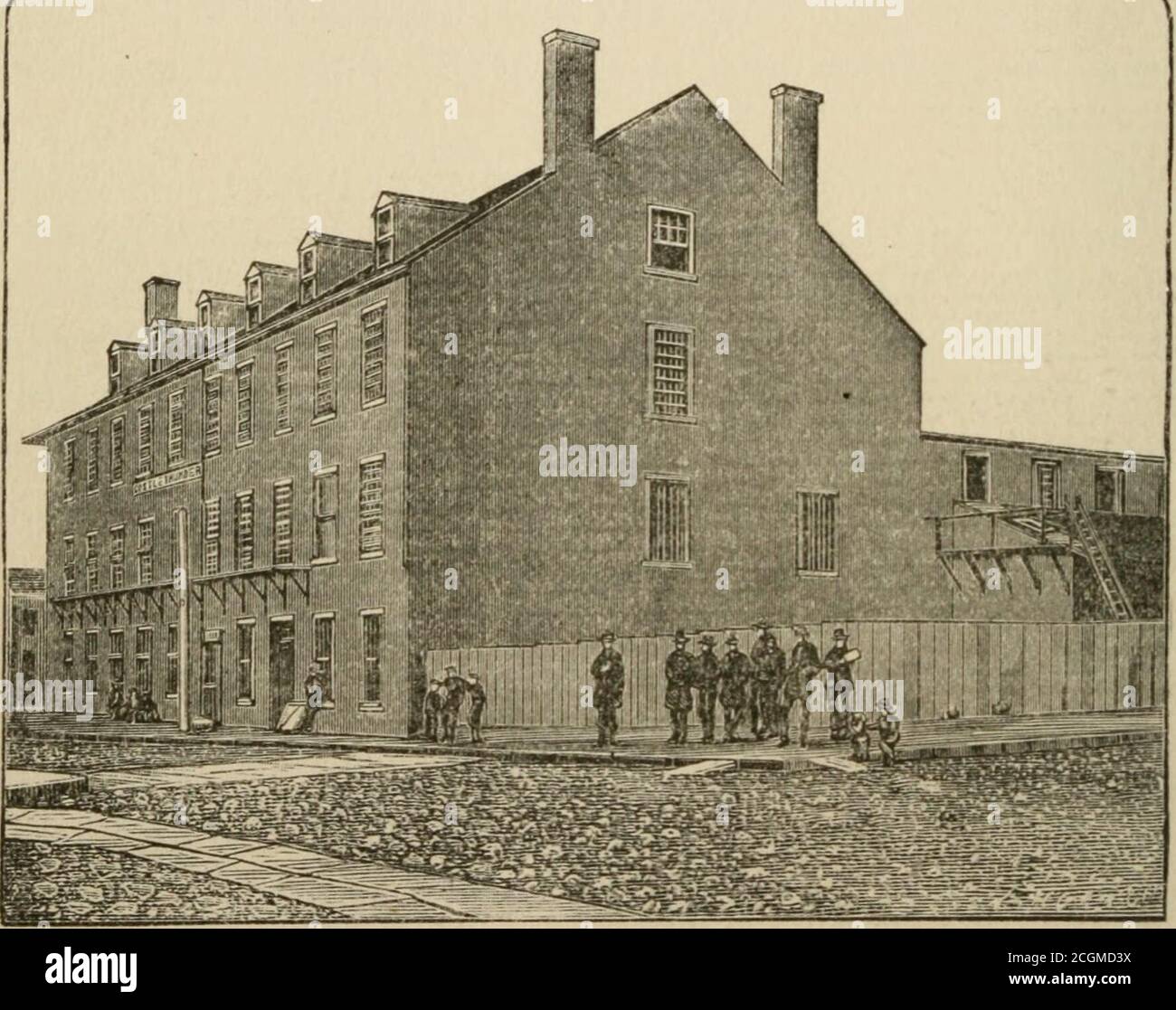. Prisoners of war and military prisons; personal narratives of experience in the prisons at Richmond, Danville, Macon, Andersonville, Savannah, Millen, Charleston, and Columbia ... with a list of officers who were prisoners of war from January 1, 1864 . ed it. It was Doctor Mary Walker. The afternoon of May 13th, we were ushered into LibbyPrison, going first into the office, where every thing ofvalue, which had not been secreted beyond detection, wastaken from us, and then we were escorted up stairs to ourquarters. This famous place had recently been desertedby reason of the removal of the fo

Image details
Contributor:
Reading Room 2020 / Alamy Stock PhotoImage ID:
2CGMD3XFile size:
7.1 MB (384.9 KB Compressed download)Releases:
Model - no | Property - noDo I need a release?Dimensions:
1778 x 1405 px | 30.1 x 23.8 cm | 11.9 x 9.4 inches | 150dpiMore information:
This image is a public domain image, which means either that copyright has expired in the image or the copyright holder has waived their copyright. Alamy charges you a fee for access to the high resolution copy of the image.
This image could have imperfections as it’s either historical or reportage.
. Prisoners of war and military prisons; personal narratives of experience in the prisons at Richmond, Danville, Macon, Andersonville, Savannah, Millen, Charleston, and Columbia ... with a list of officers who were prisoners of war from January 1, 1864 . ed it. It was Doctor Mary Walker. The afternoon of May 13th, we were ushered into LibbyPrison, going first into the office, where every thing ofvalue, which had not been secreted beyond detection, wastaken from us, and then we were escorted up stairs to ourquarters. This famous place had recently been desertedby reason of the removal of the former inmates to Macon, Georgia, and it had undergone a pretty thorough renova-tion by scrubbing and whitewash. A few of our old com- 30 Prisoners of War. rades, who were in the Kilpatrick raid, jet remained inoccupancy of a dark cell, but they coukl not greet us. Wereceived a hearty welcome, however, from twelve to fifteenofficers, mostly belonging to the cavalry arm of the serv-ice, who had arrived but a few days in advance of us.Their companionship was all the cheer we had, and forthe third night we laid ourselves down supperless to sleep.The booming of General B. F. Butlers guns, down atFort Darling, could be plainly heard, which, together with. Castle Thunder. reports of liis steady progress, communicated by the sa-gacious contrabands, kept us on the qui vive, and served asmeat and drink. But the comfort from this source was ofshort duration, for one evening Beauregard sent in nearlyall the officers ol a Massachusetts regiment, with othersfrom Butlers command, to be bottled up in Libby.The military situation then interested us no more ; beltswere tightened over receding abdomens, and our serious Prisoners of War. 31 and uadivided attention was bestowed upon the prisonration. The daily ration, per man, consisted of a piece of cornbread two inches thick by two and one-half inches square, simply mixed with water, without salt, and baked; beansoup, which was made up of brown bean